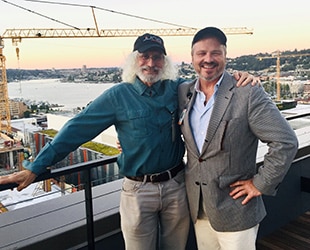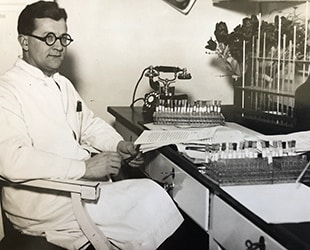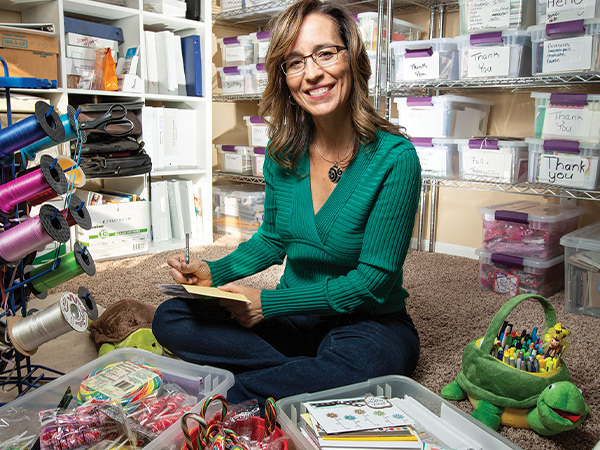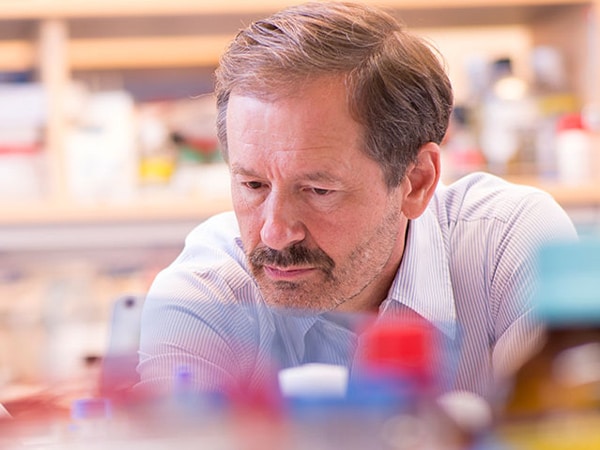Michael Jensen, MD: Moving the Dial Forward for Children with Cancer
An AACR fellowship helped a young pediatrician become a physician-scientist, using clinical insights to inform the search for new cancer therapeutics in the laboratory.
As a pediatric fellow in the mid-1990s, Michael Jensen, MD, was fascinated by an idea that was then considered avant-garde and very risky—that the body’s immune system could be mobilized to fight cancer.
He also sought dual roles as a physician and a researcher, a physician-scientist, at home in both the clinic and the laboratory.
So when the AACR announced its Research Fellowship in Clinical/Translational Research, he applied. He hoped it would give him a chance to dive into the field of cancer immunology and use his clinical insights to pursue a new treatment in the lab.
“[The AACR grant] really galvanized my desire and my commitment to being a physician-scientist, to be able to understand from patients what’s needed and to have the capabilities of going into the laboratory and finding solutions,” he recalled.
He submitted a proposal to find tumor-specific T cells for the aggressive brain tumor called glioblastoma multiforme, and he was awarded the grant.
He worked on the problem for three years. Along the way, he learned the tools of a laboratory researcher’s trade as he labored to isolate tumor-specific T cells and expand them to the point at which they could have an impact on brain cancer.
But it didn’t work, he admits ruefully.
“Despite multiple efforts, it was difficult to impossible to identify an immune response within the T cells of the patient to the tumor inside their brain,” he said. “They were either too weak or too few in number to be able to isolate and characterize.”

But the project wasn’t the end of the road for Dr. Jensen and immunotherapy. Far from it: It was a turning point. Dr. Jensen moved his sights from T cells created by the body to T cells modified in the laboratory.
“I credit [the AACR grant] and that experience with putting me on this trajectory that I have followed the last 30 years,” he said.
The approach that worked was chimeric antigen receptor technology, creating T cells that are part antibody on the outside, part T-cell receptor on the inside—CAR T cells for short. T cells are harvested from patients, genetically modified in the lab to express the CAR, and grown to therapeutic proportions. Given back to the patient, the modified T cells use their specialized receptors to hunt down and destroy cancer cells.
In his next stop, at Beckman Research Institute at City of Hope, Dr. Jensen turned his lab into a T cell factory to support patient trials. He was one of a group of scientists who nurtured the CAR T-cell technology and solved some of the problems that threatened to limit its usefulness. A key insight, he said, was that dosages of billions of cells were too large, with cells that were too differentiated and short-lived. Smaller doses were more likely to persist and populate in the patient.
After so many years of research and patient care, Dr. Jensen is gratified by the progress that has been made. He points out that CAR T-cell therapy can now be deployed for children with refractory leukemia who have exhausted conventional therapies and would otherwise be heading towards hospice care. Of those who receive CAR T-cell therapy, he said, more than 90 percent go into remission. Around half of treated children need no further treatment, and half have the opportunity to benefit from other therapies, such as bone marrow transplants.
Dr. Jensen hopes that CAR T-cell therapy can move from its place as a treatment for refractory disease to broader usage.

“The hope is that we can replace some of the most harsh and debilitating therapies, some of which create lifelong toxicities, take away the quality of life, create secondary cancers,” he said. “Maybe someday we can replace those therapies with immunotherapy like CAR T cells and have that be the front-line therapy.”
Helping children seems to run in the Jensen family. Dr. Jensen’s grandfather, Claus Jensen, MD, was director of the State Serum Institute of Denmark in the 1930s. He helped develop an immunization against diphtheria, a bacterial infection that was once a major killer of children. As a boy, Michael was given a steamer trunk filled with his grandfather’s notebooks and manuscripts, and this insight into the scientific mind helped shape his own ambition. As a high school student, he knew he wanted to be a cancer researcher.
As it happened, a pioneering cancer researcher, Philip Greenberg, MD, FAACR, lived in the Jensens’ Seattle neighborhood. After Jensen’s junior year of high school, he knocked on Dr. Greenberg’s door and asked for a position in his lab. Sure, Dr. Greenberg said, and put him to work cleaning animal cages. Dr. Greenberg, the current AACR President-Elect, became a mentor, and Jensen returned to the lab time and again as his career blossomed. He was working in the Greenberg lab when he applied for the AACR grant in 1996.
Since 2010, Dr. Jensen has held appointments at the University of Washington School of Medicine, Fred Hutchinson Cancer Center, and Seattle Children’s Research Institute, where he founded the Ben Towne Center for Childhood Cancer Research. He is also the chief therapeutics officer at Seattle Children’s.
He has kept a relentless focus on immunotherapy and has been gratified to see it gain international recognition, achieving status as the “fifth pillar” of cancer treatment, after surgery, chemotherapy, radiation, and molecularly targeted therapy.
“It’s been a privilege to be part of this journey, to work with so many other gifted scientists and physicians, and working together to make it a reality,” he said. “Seeing children who would just 10 years ago not survive their [acute lymphoblastic leukemia], to see them receive a CAR T-cell dose and be in remission 10 days later, and then to see them at patient reunions five years after that, thriving as growing children and adolescents and young adults–
“You can’t put a value on that,” he said. “It’s immeasurable. It’s a treasure.”

